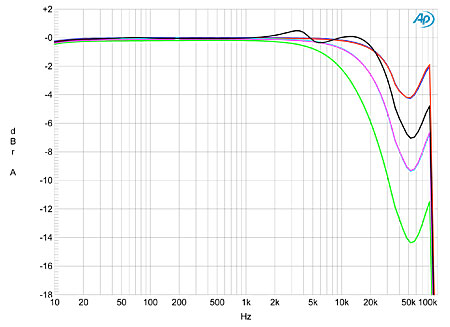Yeah! I'm looking forward to getting samples to update my amps.
It is on sale now: http://www.hypex.nl/index.php?option=com_content&view=article&id=100&Itemid=102
https://www.hypexshop.com/
Yeah! I'm looking forward to getting samples to update my amps.
Had an improvement in SQ when upgrading the voltage regulators to HxR12.
One of the very best sounds at CES, imho.Another friend's company in Korea makes above B&O ICEpower based class D amps:
http://www.aprilmusic.com/eng/main/sub02_04_04.html
It was their main demo amps with Wilson Sashas and DP1 DAC/Preamp.
The Mola-Mola preamplifier is a conventional looking unit with five inputs, all of which are,
unconventionally, switchable between balanced and unbalanced operation. The gain stage is
said to have “completely unmeasurable” distortion, in spite of being potentiometer based.
Inside there is ample room for option boards such as an MC/MM stage or a DAC. The DAC’s
outstanding feature is a DSP-controlled crystal oscillator which locks instantly to new sources
but whose jitter rejection continually improves until after a few minutes the oscillator
essentially runs free. The mono power amplifier is, of course, based on Putzeys’ own 1200W
Ncore circuit which is rapidly garnering a reputation for itself.
All three Mola-Mola products express Putzeys’ idiosyncratic brand of audio objectivism: “We
all accept that bad measurements don’t necessarily mean that an amp or converter sounds
unpleasant. But the usual conclusion that good figures therefore don’t mean anything either,
is illogical. No serious audiophile is merely looking for a pleasant sound. It has to bring us
closer to the original.” This doesn’t quite mean he aligns himself with the skeptical camp
though: “By implying that distortion, jitter and other errors only become audible at some
impossibly high level, they have helped stoke the polarisation. That way the tools to make
audible errors completely negligible are left unused by either side. By subjectivists because
they don’t believe the goal is valid, by skeptics because they don’t believe they’re necessary. I
can assure you they are. Every time I’ve heard an amplifier step aside for the music, its
measured performance was impeccable.”
“People are genuinely moved when they listen to these products,” comments Van
Amerongen, “One said that the way the music touched his heart was proof positive that the
amplifier hadn’t touched the music. That’s pretty much the essence, isn’t it?
Hi Kevin. Thanks for the feedback. Has anyone done any measurements? I am especially interested in frequency response with different loads to see level of ringing/load sensitivity.
yep Frank. Just imagine, once the signal is A/D converted at the mic, its digital all the way through until the output filter in the power amp. You are not going to have much to talk about concerning the amp/speaker interface if you use this baby. We truly are at the digital crossroads. But many audiphiles prefer their distortions...
Tom
Do you want to know something scary, Tom? The digital soundtracks are full of clipping waveforms: the source has already been slightly mangled, when you first get it in the door!Sure miss those clipping indicators from the old days.
Tom
Thanks. That is the right measurement but unfortunately it appears to use resistive loads. I love to see real speaker/simulated load like stereophile uses. Here is an example NAD M2 amplifier: http://www.stereophile.com/content/nad-m2-direct-digital-integrated-amplifier-measurementsIf you go to pg 7 on the datasheet they have the graphs you are looking for:
http://www.hypex.nl/docs/NC400_datasheet.pdf

Though reading that link, the measured output impedance of the NAD at 20kHz was over 1 ohm, which is pretty dreadful -- no wonder the FRs are all over the place. The nCore module is nearly 1,000 times better in performance in this key area.Thanks. That is the right measurement but unfortunately it appears to use resistive loads. I love to see real speaker/simulated load like stereophile uses. Here is an example NAD M2 amplifier: http://www.stereophile.com/content/nad-m2-direct-digital-integrated-amplifier-measurements

The ringing is caused by too low of a switching rate forcing the filter to be close to the audible band. Same problem we have with DACs except that we now have much higher power requirement and unknown speaker/wire load.
Why I particularly say that, is after having looked at the Duende track, from the Black Light Syndrome album. This is supposedly demo quality, but it's riddled with clipping points ...
| Steve Williams Site Founder | Site Owner | Administrator | Ron Resnick Site Owner | Administrator | Julian (The Fixer) Website Build | Marketing Managersing |















